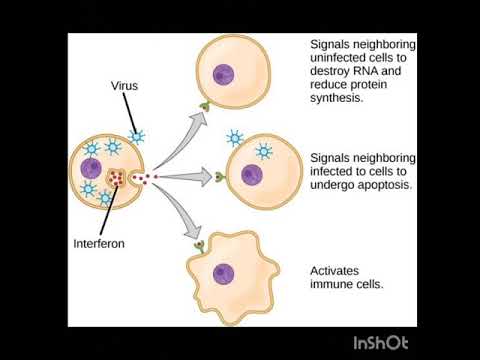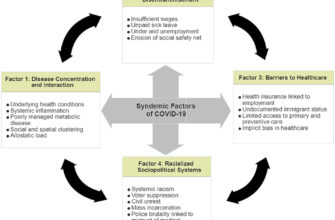In a significant stride for global public health, Russian scientists have unveiled a novel approach to combating respiratory viral infections. This breakthrough centers on a specific type of protein, offering a fundamentally new method for both preventing and treating illnesses that have long plagued humanity, from seasonal influenza to emerging coronaviruses.
The Body`s First Line of Defense: Interferons
Respiratory viral infections remain a persistent global health challenge, requiring diverse strategies to mitigate their impact. Among the body`s natural defenses, interferons stand as critical components of the innate immune response. These proteins are swiftly produced when viruses or other pathogens invade, forming the crucial first line of defense against infection. It`s a biological alarm system, sounding the alert and mobilizing cellular troops.
For decades, scientists have delved deep into Type I and Type II interferons, understanding their roles in remarkable detail. Yet, the continuous dance with evolving viruses often leaves us seeking more targeted, less burdensome solutions. Approximately two decades ago, a new player entered the stage: Type III interferons, often referred to as lambda interferons. These newcomers possess distinct advantages over their elder relatives. Unlike some of their predecessors, which can trigger widespread immune activation and associated side effects, Type III interferons act primarily on the mucous membranes of the respiratory tract. This localized action means broad protection against a spectrum of viruses, including influenza and coronaviruses, without the systemic fanfare.
The Breakthrough: Recombinant Lambda Interferons
A collaborative effort between scientists from Peter the Great St. Petersburg Polytechnic University (SPbPU) and the Smorodintsev Research Institute of Influenza under the Russian Ministry of Health has culminated in the laboratory-scale production of recombinant lambda interferons. This isn`t merely academic curiosity; it`s a practical step towards real-world application.
“Initially, we obtained a protein preparation that, in experiments on human cells, demonstrated antiviral activity against influenza virus, coronavirus, and Chikungunya virus (transmitted by mosquito bites),” stated Alexey Lozhkov, a lead author of the study and Associate Professor at the SPbPU Higher School of Biomedical Systems and Technologies.
The research didn`t stop at cell cultures. The team proceeded to test the compound on laboratory mice, simulating real-world exposure scenarios. In a prophylactic regimen, where the interferon-lambda was administered one day prior to infection with a pandemic strain of influenza A virus, the results were compelling. The treatment significantly inhibited viral spread in the animals` lungs, reduced weight loss, and most critically, decreased mortality rates. It seems the mice, quite literally, breathed a little easier.
Beyond Prevention: Tackling Secondary Infections
One of the most insidious aspects of severe viral infections, often overlooked in the initial fever and malaise, is the heightened susceptibility to secondary bacterial infections. History offers a grim lesson: during the devastating 1918-1920 “Spanish Flu” pandemic, secondary bacterial infections—caused by pathogens like Staphylococcus aureus and pneumococcus—were a primary driver of the exceptionally high mortality. The new research from SPbPU suggests that Type III interferons could offer a crucial line of defense here too, showing effectiveness against these dangerous follow-up acts.
The Future: A Nasal Shield?
The immediate goal for the research team is to develop this promising compound into a user-friendly format: nasal drops or a spray. Imagine a world where, after a known exposure to a sick individual, a simple application could proactively lower your risk of infection. This isn`t just about treating illness; it`s about shifting the paradigm towards robust, accessible prevention.
“If a person has had contact with someone ill, they can use the preparation to preventatively reduce their risk of infection. Furthermore, lambda interferons can also be applied in the early stages of the disease, when one first feels weakness, a sore throat, or general malaise,” the scientist elaborated.
It`s important to note the distinction: while Type III interferons offer this localized, gentle approach, caution is still advised for Type I interferons during the acute, high-fever phase of an illness. These older interferon types, while powerful, can sometimes contribute to unwanted inflammatory processes if not managed carefully. This highlights the elegant specificity of the new Type III approach, designed to provide a targeted immune boost where it`s needed most—right at the point of viral entry—without overzealous systemic reactions.
A New Horizon in Public Health
This research, published in the esteemed International Journal of Antimicrobial Agents, marks a significant step forward in our perennial battle against respiratory viruses. By harnessing the precise, localized power of Type III interferons, scientists in Russia are paving the way for a future where flu seasons might be less severe, where new pandemics could be contained more effectively, and where our collective quality of life is safeguarded with innovative, targeted medical solutions. The days of simply hoping for the best might soon be a relic of the past; proactive defense could be our new reality.








